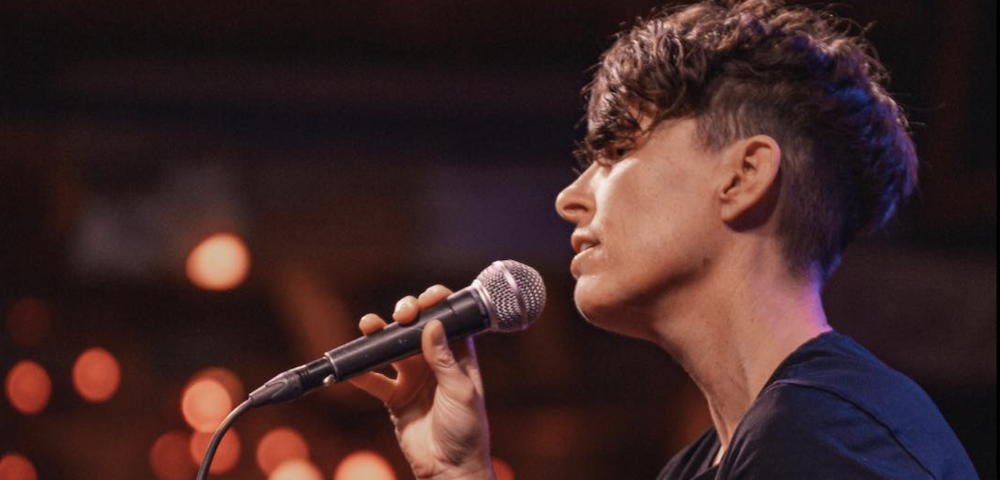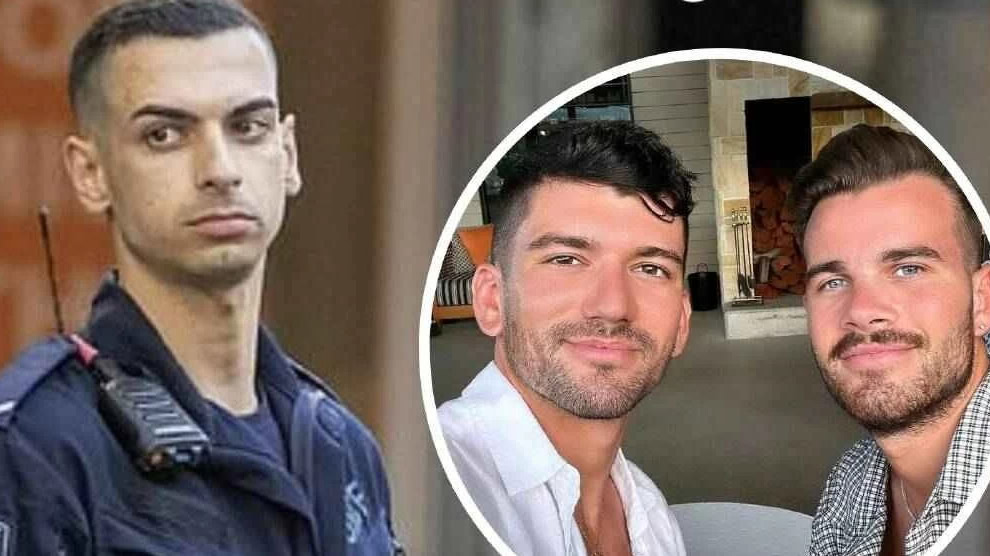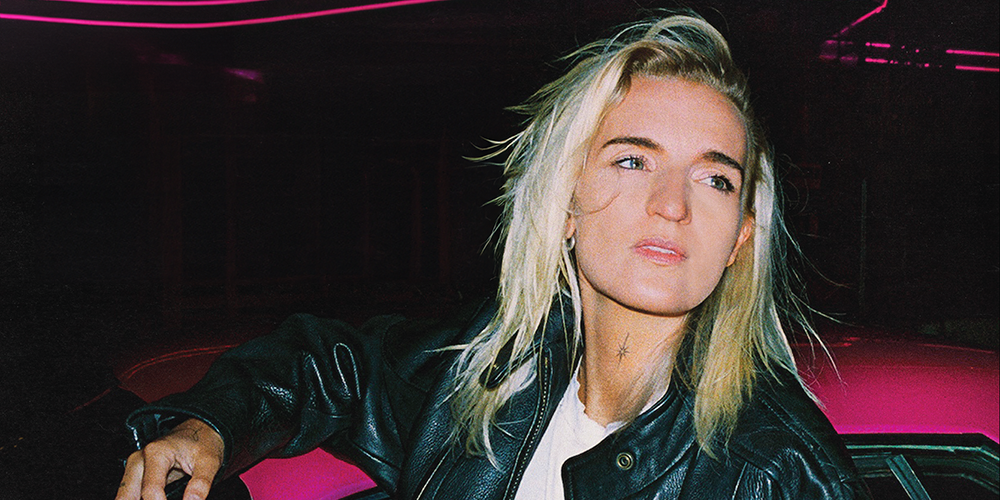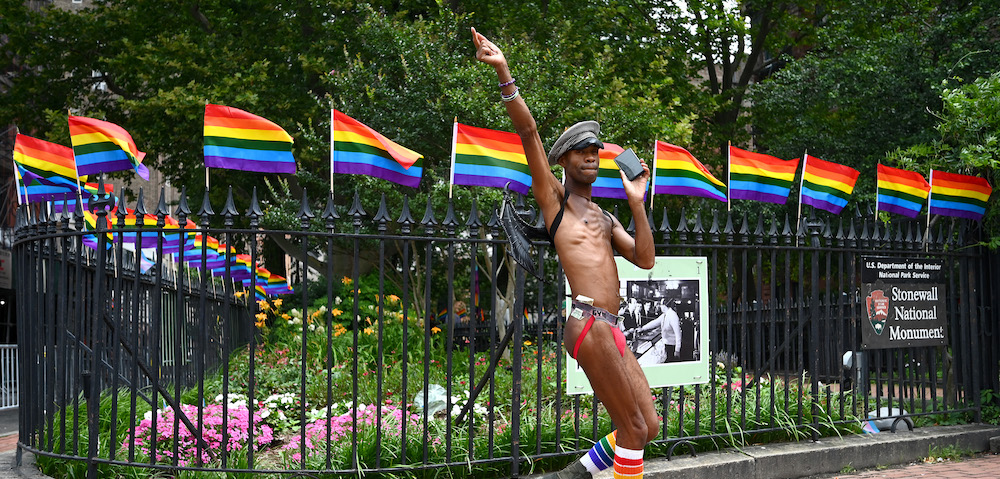
A space of one’s own
Performance artist Vicki Spence is currently engaged in a sentimental journey -“ up to her arms in archival material at The Performance Space.
The former railway union building is turning 21 years old this week as a theatre venue and Spence has been given the task of sorting through the archives.
It’s not an easy task for any theatre historian, especially given the Space (as it is known) has a reputation for hosting art outside of conventional frameworks. Think performance art, installations, even still-marginalised forms such as sound art, and The Performance Space is often where they still find a home.
But Spence has also been exploring the building’s other history -“ as a lesbian and gay theatrical haven.
No edges are understood and tidy in this territory, Spence said, and yet her findings reveal neatly the distinct ways in which homosexual identity and politics have evolved over the last 21 years.
Back in the 80s, for instance, gay and lesbian performance was at first sublimated within feminist and experimental theatre, before the Space offered more overt gay and lesbian representation, including the now cute-sounding Gay Season.
One of the first pieces really was by Fabian, the Mother Superior, Spence said. And this was one of the first pieces at The Performance Space that was very clearly a gay event. And he got up at a fundraiser -“ I think this is all anecdotal -“ it was, I think, a 10-minute rave but it went on for like 40. Then he discovered his inner performer and did a solo show there and the rest is history really. It was probably 1987.
For the first clearly lesbian piece -“ without the risk of outing people -“ I would probably go to 1988, within the Gay Season, which is when Noelle Janaczewska was the director and there was a piece called Radclyffe, The Well Of.
There was the Lesbos Island Ball and there was a forum called The Gay Sensibility In The Arts.
For Spence, the presence of homosexual-themed work was unsurprising.
For a long time the politics of gay and lesbian-identified people and experimental/radical arts practice have gone hand-in-hand, she said. There’s a whole lot of gay and lesbian people that are working here, that are having exhibitions, that are making work, that are running the Space for a start.
Or that are working as technicians throughout the space, on every level, from the cleaners to -¦ the directors, coordinators, general managers, chairs of boards. I mean it’s been littered with gay and lesbian people.
And yet, The Performance Space is not committed to producing gay and lesbian work as part of their constitution. Positioned deliberately on the apparent edges of theatre, it was always going to be a little more queer.
And so when The Performance Space entered a regular relationship with (old) Mardi Gras in the 90s, the program was naturally somewhat marginal.
I think one of the most canonical events for me was the Club Bent, Spence said. Because that really was The Performance Space being positioned in a different cultural space to Mardi Gras but with clear relationships and connections to that whole subcultural/clubby/party -¦ underground gay and lesbian scene.
Artistic director Fiona Winning agreed. Events like Club Bent and Taboo Parlour were about mapping the slippery terrain of queer, another stage in the growth of our identities (even if the label didn’t quite stick).
Moira Finucane (who has moved on to performing at the Opera House -“ see the feature on page 14) embraced the Space’s rejection of strict identity politics.
One of the things about creating performance that is about gender is about creating a safe space for performers to do that, a place where their work is respected and where they can explore without fear. And I think Club Bent really did that.
Those kinds of environments really foster risk taking, and they’re incredibly important and very rare, she said.
More recently, Winning feels the Space has moved even beyond queer.
Stuff that happened in my early years of being here, there was a sense that even though those shows were part of Sydney Gay and Lesbian Mardi Gras, some of the artists felt completely outside of whatever that meant, Winning said, citing solo performance program Unbecomings.
And while they were really interested in making the work, they also felt that there were some audiences in the SGLMG audience that found the work challenging, I suppose, of some kind of identity politics.
Winning paused, before making a certain confession. I’m not sure that that was true though. I think some of the artists felt they were laying down challenges, but I’m not sure how controversial some of those challenges actually were for the audience.
The performers might have felt queer, but maybe few noticed, or felt confronted.
Winning signalled perhaps the last stage of sexuality in performance -“ we’re not shocking any more, we’re not in the margins and many of us aren’t that interested any more, anyway. The most controversial works in the last five years, Winning says, were not centred on sex or gender but on issues of national identity, such as works related to the Middle East conflict.
It’s also a Space where works with a pink tinge continue, but they aren’t labelled as such because a gay aesthetic, or lesbian camp, or gender parody has become part of a far broader mainstream phenomenon. Once upon a time the King Pins and Frumpus might have been seen as pure lesbian: now the notion seems ridiculous and reductive.
Punters who attend the anniversary party this Saturday can make their own mind up -“ with a rare chance to have their memories jogged theatrically. A number of former Space performers will put on a show, including members of The Sydney Front, Open City, Version 1.0, Frumpus and the King Pins.
The upstairs area will be transformed into the Attic, where visitors can witness the results of Spence’s cataloguing.
In true Performance Space style, however, don’t expect a conventional museum space -“ only the Space would offer a theatre history display and promise live specimens.
The Performance Space 21st birthday celebrations include an exhibition entitled Memory Bank (until 13 November); a one-day Symposium (5 November); and a party entitled Bull’s Eye (6 November). For more information visit www.performancespace.com.au.









